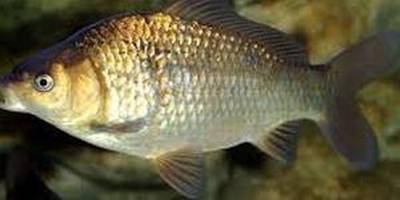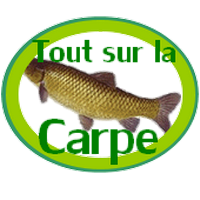What is a Ghost Carp?
The Ghost Carp (often affectionately called a "Ghostie") is not a distinct species but a stunning hybrid of the Common Carp (Cyprinus carpio) and a metallic Koi Carp. Renowned for its striking, almost spectral appearance, the Ghost Carp has become a highly sought-after prize among anglers and a beautiful addition to large ponds. Its unique coloration gives it an enigmatic presence in the water.
These fish inherit the hardiness and growth potential of common carp with the beautiful color patterns of Koi, making them a perfect blend of brawn and beauty.
Ghost Carp at a Glance
- What it is: A hybrid between a Common/Mirror Carp and a metallic Koi Carp.
- Identification: A pale body (white, cream, yellow) with dark, shadowy markings on the head, back, and fins.
- Types: Most commonly found as Mirror Ghost Carp or Leather Ghost Carp.
- Size: Can easily exceed 30 lbs (14 kg) in well-managed fisheries.
- Angling: Fights hard and is caught using standard carp tactics and baits.
How to Identify a Ghost Carp

Identifying a Ghost Carp is all about its unique color and scale pattern, as its body shape is typical of a Common Carp:
- Coloration: The key feature is a pale, pearlescent body (white, cream, or yellow) contrasted with dark markings (black, grey, or brown) on the head, back, and fins. This gives them their "ghostly" look.
- Head Markings: Many Ghosties have a dark "hood" of color over their head and along the dorsal line.
- Barbels: Like all Common Carp, they have two pairs of barbels around their mouth.
- Scale Patterns: They come in several forms:
- Mirror Ghost Carp: Has a few large, irregular scales, often along the lateral line. The ghost coloration appears on both the scaled and unscaled skin.

- Leather Ghost Carp: Almost entirely scaleless, with smooth skin that shows off the ghost patterns. They might have a few scales near the dorsal fin.
- Fully Scaled Ghost Carp: Less common, these have a full set of scales with the ghost coloration.
- Mirror Ghost Carp: Has a few large, irregular scales, often along the lateral line. The ghost coloration appears on both the scaled and unscaled skin.
Origin and Development: Bred for Beauty and Brawn
The Ghost Carp is a man-made creation, not a naturally occurring fish. It was developed by breeders, primarily in the UK, to create the perfect specimen for anglers.
- Parent Stock: The most common cross is a hardy Mirror Carp or Leather Carp with a metallic, single-colored Black Carp.
- Purpose: The goal was to combine the fast growth rate and fighting strength of a common carp with the stunning looks of a Koi, creating a unique and desirable trophy fish for fisheries.
Angling Significance: The Prized Phantom
Ghost Carp are a favorite among anglers for several reasons:
- Visual Appeal: Their ethereal appearance makes them a beautiful and memorable catch. They are highly photogenic.
- Trophy Status: A large "ghostie" is a prized trophy, and many anglers specifically target them.
- Fighting Ability: They fight with the same power and stamina as any other large carp, offering a fantastic challenge.
- Fishery Attraction: Stocking Ghost Carp boosts a fishery's appeal, drawing in anglers looking for a unique catch.
Diet, Feeding, and Best Baits
The diet of a Ghost Carp is identical to other Common Carp. They are opportunistic omnivores that feed on the bottom but will rise for surface baits.
- Natural Diet: They forage for aquatic insects, snails, worms, and plant matter.
- Best Angler's Baits: They respond well to all classic carp baits:
- Boilies (sweet or fishmeal flavors)
- Pellets
- Sweetcorn and Tiger Nuts
- Maggots and Worms
- Bread and luncheon meat
Care in Fisheries and Ponds
Proper care ensures these beautiful fish thrive and grow to impressive sizes.
- Water Quality: Clean, well-oxygenated water is essential. Good filtration and aeration are key, especially in heavily stocked venues.
- Habitat: They need plenty of space to grow. Submerged features and weed beds provide cover and natural food sources.
- Proper Handling: Always use a soft, wet unhooking mat and handle the fish gently. Return them to the water promptly to minimize stress and ensure their health for the next angler.
- Predation: Their pale color can make smaller Ghost Carp more visible to predators like herons. Deep water areas provide a safe refuge.
